Text
Shamitabh- Amitabh
"एक दौर था शेहनशाह का, एक दौर है सरकार का, एक दौर आयेगा शमीताभ का पर आपके यह किरदारो का दौर हमेशा बरकरार रहेगा"

0 notes
Text
पंडित मदन मोहन मालवीय- एक भारत रत्न
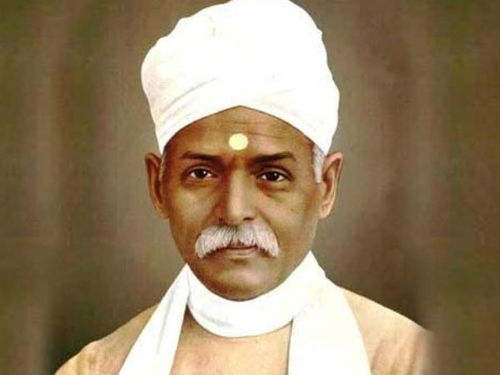

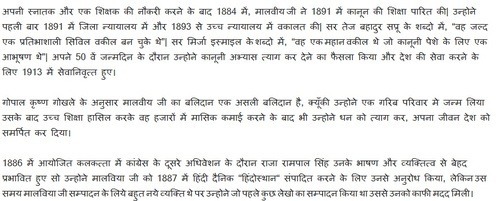

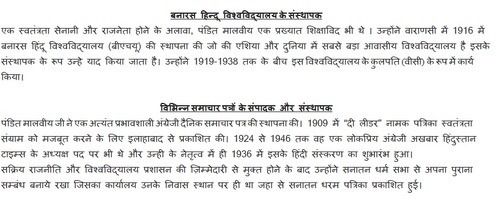

#madan mohan malviya#Indianfreedom#indian freedom struggle#indian#british rule#hindustan times#bharat ratna#mahatma gandhi#prayag#allahabad#allahabadcity#banaras hindu university#banaras#delhi#lahore#kolkata#indian national congress#publisher#writer#teacher#advocate#lawyer#india#famous
0 notes
Text
The Unsung Heroes of Indian Freedom Struggle
The Unsung Heroes of Indian Freedom Struggle- A dedication on this day of 19th December
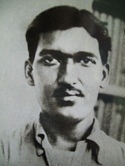
Ashfaqulla Khan
Younger Days of Ashfaqulla Khan
The unsung freedom fighter Ashfaqulla Khan was born on 22nd October 1900 in a historical city of , Shahjahanpur in Uttar Pradesh. He belonged to a Pathan family and was famous for militancy. His mother Mazhoor-Un-Nishan Begum was an very fascinating lady. Among his four siblings Ashfaqulla Khan was the youngest. His elder brother Riyasat Ullah Khan was the classmate of Ram Prasad Bismil. When Bismil was declared runaway after the Manipuri plot, Riyasat used to tell Ashfaqulla about the bravery and Urdu poetry of Bismil. This led to a keen interest in Ashfaqulla to meet Bismil because of his poetic attitude. In the year 1920, when Ram Prasad Bismil came to Shahjahanpur, Ashfaqulla tried to meet him but failed. In the year 1922 when the non corporation movement started, Bismil organized meetings in Shahjahanpur to tell the people about the movements. It was then Ashfaqulla met Bismil and introduced himself as brother of his friend. From then on, they became good friends and the poetic alignment between them made them popular.
His Part in Indian Freedom Movement
When Mahatma Gandhi withdrew the non corporation movement after the Chauri Chaura incident in 1922, many Indian youths felt dejected and among them Ashfaqulla was one. He felt that India should become free as soon as possible and so he decided to join the revolutionaries and win the friendship with Bismil. Asfaqullah khan and Ramprasad Bismil together formed Hindustan Republican Association. The founder of the Association was Shachindra Nath Sanyal. The objective of the associatiom was to make India free from the clutches of the British. Later when the British disregarded their plea for independence, the revolutionaries decided to make them hear through their actions, subsequently, they organized a meeting on 8th August 1925 in Shahjahanpur and it was decided to loot the government treasury carried in the 8 Down Saharanpur-Lucknow passenger train. On 9th August 1925, Ashfaqulla Khan and eight other revolutionaries looted the train under the leadership of Ram Prasad Bismil. After the act, the British Government was astonished and deployed the Scotland Yard police to investigate the case. Within a month, the C.I.D collected the clues and decided to arrest the revolutionaries. On the morning of 26th September 1925, Ram Prasad Bismil and others from Shahjahanpur were arrested but Ashfaqulla went into hiding and moved to Banaras wherefrom he went to Bihar and worked in an engineering company for ten months. Later he went to Delhi to find out ways to move out of the country and took the help of one of his Pathan friend who betrayed him by informing to the police and Ashfaqulla was subsequently arrested. Tasadduk Husain, the then superintendent of police tried to play communal politics between Bismil and Ashfaqulla Khan but failed.
Death of Ashfaqulla Khan
Ashfaqulla Khan was detained in Faridabad jail and a case was registered against him. The case of Kakori conspiracy was concluded by awarding death sentence to four people including Ashfaqulla Khan and Ram Prasad Bismil. On 19th December 1927, Ashfaqulla Khan was hanged and before hanging he kissed the hanging rope and recited the ‘Shahada’ in Urdu. Both Ram Prasad Bismil and Ashfaqulla Khan were hanged on the same day but in different jails.

Ram Prasad Bismil
"सर फरोशी की तमन्ना अब हमारे दिल मैं है,
देखना है ज़ोर कितना बज़ुएकातील मैं है"
The murderous hands of the ruthless foreign rulers cannot extinguish my burning desire to make the supreme sacrifice (for freeing my country).
Story of Ram Prasad Bismil
'Bismil' is the pen-namefor of Ram Prasad. As 'Bismil' he is well-known as a great revolutionary poet in Hindi. At the end of his autobiography, he has reproduced some selected poems. Every line of his poems throbs with patriotic fervor. In one poem, he prays, “Even if I have to face death a thousand times for the sake of my Motherland, it shall not sadden me. Oh Lord! Grant me a hundred births in Bharat. But grant me this, too, that each time I may give up my life in the service of the Motherland."
Ram Prasad Bismil was one of the great Indian freedom fighters who also participated in the Kakori train incident. He was also a great poet and has written several inspiring verses. He was prosecuted by the British Government in India. Ram Prasad Bismil joined the band of martyrs who dreamt of a free India and made the supreme sacrifice. Bismil, along with stalwarts like Ashfaqulla Khan, Chandra Shekhar Azad, Bhagwati Charan, Raj Guru and others organised several upheavals against the British; they printed literature, provided shelter to revolutionaries, made hand bombs and were a constant source of worry to the British Government. They are most remembered for the Kakori train incident and the bombing of the Punjab assembly.
His Part in Indian Freedom Movement
Ram Prasad 'Bismil' was a brave revolutionary, who gave up his life smilingly for the sake of the Motherland. He was persecuted by an enraged foreign government, hunted by the police and betrayed by fellow workers. And yet he lit the fire of revolution to be liberated from slavery. He was the brave leader of the Kakori train incident. His poetry is also a lamp lighted at the altar of the Motherland. Kakori is a village near Lucknow. It became famous, because the attack on the train took place near Lucknow.
It was the evening of the 9th of August 1925; the number eight down train was passing near Kakori. Ram Prasad and his nine revolutionary followers pulled the chain and stopped it. They took under their control the money belonging to the government, deposited in the guard's carriage. Excepting that one passenger was killed by an accidental shot, there was no bloodshed. This extremely well-planned incident jolted the government.
After a month of detailed preliminary inquiries and elaborate preparations, the government cast its net wide for the revolutionaries. Arrest warrants were issued not only against the ten participants but also against other leaders of the Hindustan Republican Association. With the lone exception of Chandra Shekhar Azad, all participants were caught. The case went on for over a year and a half. Ram Prasad, Ashfaqullah, Roshan Singh and Rajendra Lahiri, all four were sentenced to death. A strong campaign was organized throughout India to save the lives of these revolutionary heroes. Many of leaders appealed to the British Government to show mercy to the condemned men. But the government was unyielding.
Death of Ram Prasad Bismil
It was the 18th of December 1927. A middle-aged lady was waiting at the main gate of the Gorakhpur Central Jail. She was eagerly waiting to be called into the prison. By that time, her husband also arrived there. He was surprised that his wife was already there before him. He also sat down to wait for the call. A young man came there. He was not related to them. He knew that the couple would be permitted to enter the prison. But how should he manage to enter the prison? This was his problem. The officials of the prison called in the husband and the wife. The young man followed them. The guard stopped him and rudely asked, " Who are you?" “Permit him also, brother. He is my sister's son.” the lady said in an entreating voice. The guard relented. All the three entered the prison to visit a freedom fighter who was to face his death on the morrow. The freedom fighter was brought there in chains. They were like ornaments on him. This was the last time that he could see his mother, the last time he could address her as 'mother'. At this thought grief welled up in him. He stood speechless and tears rolled down his cheeks. In a firm voice the mother said, "What is this, my son? I had thought of my son as a great hero. I was thinking that the British Government would shiver at the very mention of his name. I never thought that my son would be afraid of death. If you can die only in this way, weeping, why did you take up such activities?"
The officials were astounded at the firmness of the mother. The freedom fighter replied, " Mother, dear, these are not tears of fear - the fear of death. These are tears of joy - joy at beholding so brave mother!"
The brave son of that brave mother was Ram Prasad Bismil. He was the leader of the famous kakori train incident. The last meeting ended. Next morning Ram Prasad got up earlier than usual, bathed and said his morning prayers. He wrote his last letter to his mother. Then he sat down with calm mind awaiting his death. The officials came and removed his chains. They took him from the prison – cell towards his death. He was completely untroubled and walked like a hero. The officials were amazed. As he moved to the gallows, he joyfully chanted 'Vande Matram' and 'Bharat Mata Ki Jai'. At the top of his voice, he shouted, "Down with the British Empire". Then he calmly recited prayers and embraced death. As he was being executed, there was a strong guard around the prison.
When he was dead, the officials brought out the dead body. Not only his parents but also hundreds of his countrymen were waiting outside in tears. The people of Gorakhpur decorated the body of the brave son of Bharat as befitted a hero and carried it in a procession. Flowers were showered on the body' and the last rites were performed.
#Indianfreedom#india's struggleforindependence#ashfaqulla khan#ram prasad bismil#19th december 1927#freedomfighters#india#free india#allahabad#allahabadcity#sangamnagri#kumbhamela
0 notes
Text
Allahabad – On the path of becoming A S.M.A.R.T City

The holy city of Prayag and its citizens are going to witness the change of century with Allahabad becoming one of the smart cities as planned by current Central Government of India. Our Prime Minister is much more avid to bring these projects to ground in reality with a budget of Rs. 7060 crore proposed in the Union Budget.
United States of America will help India in developing Allahabad, Ajmer and Visakhapatnam apart from joining hands with civil society and authorities to provide clean water and sewage facilities in 500 cities.
This announcement was made after the talks between Prime Minister Narendra Modi and President Barack Obama.
Urban Development Minister, Shri Venkaiah Naidu, while delivering the Keynote Address at the US- India Smart Cities Conclave emphasized that it was time to walk the talk on PM’s Mission on smart cities. He said unless the leadership is smart with smart vision, smart commitment and smart courage to take reforms the smart city mission cannot be realized. He highlighted that transparency and accountability is very important.
Now the question arises when this dream will turn to reality?

Before really answering this question we must look into the facts that what actually smart city is and how does it functions and what are the development stages.
1. Well-organized utilities like energy, water, solid waste and effluents: This area is often the most talked about after IT. Smart meters, renewable energy, energy conservation, water harvesting, effluent recycling, scientific solid waste disposal methods et al are all clearly the hallmark of a smart city.
2. The 3’S Safety, Shelter and security: This feature is high in public awareness, especially with disturbing news on the safety of women, road rage, and robbery attacks on the elderly and juvenile criminal behavior. Clearly, networks of video-cameras, brightly lit public areas, intensive guarding and surveillance, identity-verified access, and rapid response to emergency calls are all on the expectations list.
3.The Financial continuity: The 74th Amendment to the Constitution (1992) allows towns and cities to "take charge of their own future". Nowhere is this more important than financial freedom. This is only possible with detailed and extensive tapping of all sources of revenue in forms of property taxes, advertisements coupled with smart collection of consumer pay charges across the complete range of utilities. It also has to do with the fundamentals of economic discipline that would facilitate the increase of long term debt like municipal bonds.
4.Information and communication technology enabled governance: The international and domestic big daddies of the information technology (IT) world have, with their aggressive presentations, virtually hijacked the smart city definition to only mean IT-enabled administration and governance. While such a restrictive definition is undesirable, enabling ICT is clearly one of the more important planks. Often referred to as "smart government", the use of integrated technology platforms that are easily accessible across various devices is certainly key to providing access, transparency, speed, and participation and redressed in public services.
5.Citizen contribution in local government: The keen participation of citizens in local issues needs careful scheming of electoral and participative discussions. The current indifference towards public elections needs complete turnaround.
6.Environmental Friendly: Reducing the carbon footprint and eco-friendliness is the basic and utmost requirement of becoming a smart city this involves a lot of citizen involvement in keeping the surroundings clean and environmental friendly Swacch Bharat Mission is a step towards that. Parks and green open spaces, nonexistence of pollution, use of refurbished, conservation and recycling are mandatory.
7. Transportation Oriented Surroundings: Walk to your office or place of work is the ideal solution over here. Nonetheless, suitably connected public transportation with first and last mile connectivity in place, reduced enthusiasm to use personal vehicles, use of electric cars, and bicycle paths are all in the anticipation medium.
8. Satisfactory Public Wealth: Smart cities cannot be devoid of the suitable levels of social infrastructure like schools, hospitals, public spaces, sporting and recreational grounds and retail and entertainment venues. Along with a brain that works, and hands and legs that move, it must also have a heart that beats to the joys of daily living.
Now if the above factors are successfully implemented then we are on the correct path and yet we can achieve what we dreamt of but it is only possible with sufficient public and government support and with current developments going around Allahabad region it can be predicted that our city "Prayag" will become more beautiful and smart in the near future to come and our future generation is going to witness a much better environmental surrounding, infrastructure and utilities.
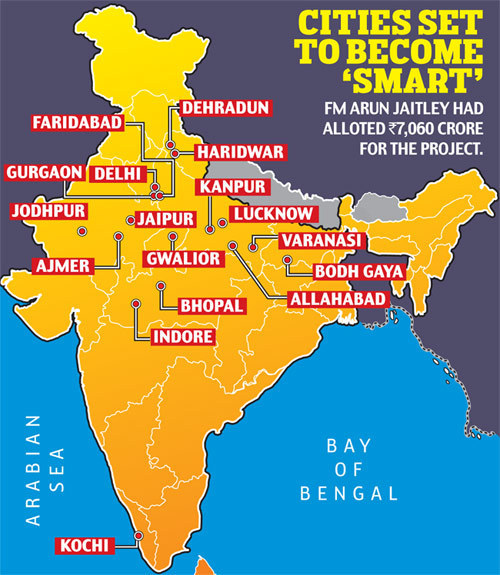
#allahabad#prayag#smartcity#development#infrastructure#india#indiashining#indian government#uttar pradesh#unionbudget#2015
0 notes
Text
WoW Facts!
According to the year 2011 census, Allahabad is the seventh most populous city in the state and the thirty sixth most-populous city in India, with an estimated population of 1.11 million in the city and 1.21 million in its metropolitan region. In 2011, it was ranked the world's 130th fastest-growing city.

0 notes
Text
खजाने से ज्यादा कीमती हैं किताबें
किताबें आरबीआई के खजाने से ज्यादा कीमती होती हैं। टीवी और इलेक्ट्रॉनिक गैजेट्स से जानकारी तो मिल सकती है, लेकिन ज्ञान किताबों से ही मिलता है। किताबें सुख-दुख के साथ तो होती ही हैं व्यक्तित्व विकास में भी महत्वपूर्ण भूमिका निभाती हैं। यह बातें सोमवार को प्रदेश के राज्यपाल राम नाईक ने कहीं। वह भारती भवन पुस्तकालय के 125 वें स्थापना दिवस समारोह में बतौर मुख्य अतिथि मौजूद थे। उन्होंने कहा कि भारती भवन पुस्तकालय में दुर्लभ किताबें और पांडुलिपियां मौजूद हैं, जो शायद ही कहीं और हों। यही वजह है देश के कोने-कोने से लोग यहां के संग्रह में शामिल किताबों को पढ़ने आते हैं।
उन्होंने कहा कि भारती भवन पुस्तकालय एक पावर हाउस की तरह है, जहां से ज्ञान का संचार होता है। यह कोई साधारण पुस्तकालय नहीं है बल्कि आजादी आंदोलन के दौरान यह स्वतंत्रता संग्राम सेनानियों का गढ़ भी रहा है, जो इस पुस्तकालय की एक महत्वपूर्ण उपलब्धि है। दुर्लभ किताबों, पांडुलिपियों और दस्तावेजों की माइक्रोफिलिंग करने की दिशा में वह पुरा सहयोग करेंगे। आश्वासन दिया कि वो केंद्र और राज्य के बीच सामंजस्य स्थापित करने का काम करेंगे। ई-लाइब्रेरी शुरू करने का भी सुझाव दिया। पुस्तकालय के विकास के लिए दान दाताओं से आगे आने की अपील की।
इससे पूर्व महामना मदन मोहन मालवीय, पुस्तकालय के संस्थापक ब्रज मोहन लाल भल्ला, पुस्तकालय सचिव सुनीत व्यास और अध्यक्ष हरिमोहन दास टंडन के चित्रों पर माल्यार्पण और दीप जलाकर की। इसके बाद पुस्तकालय की पत्रिका का विमोचन किया गया। कार्यक्रम की अध्यक्षता कर रहे न्यायमूर्ति गिरधर मालवीय ने पुस्तकालय की महत्ता पर प्रकाश डाला। स्व��गत पुस्तकालय संयोजन समिति सचिव डॉ. मुक्ति व्यास और डॉ. केपी भल्ला ने किया। संचालन डॉ. राम नरेश त्रिपाठी ने किया। इलाहाबाद डिग्री कॉलेज की छात्राओं ने राष्ट्रीय गीत, सरस्वती वंदना और स्वागत गीत प्रस्तुत किया। इस दौरान मंडलायुक्त बीके सिंह, जिलाधिकारी भवनाथ सिंह, अपर जिलाधिकारी श्रीकृष्ण, एसपी सिटी राजेश यादव, डॉ. केपी भल्ला, डॉ. अतुल कुमार, स्वतंत्र पांडेय, डॉ. आनंद शंकर, डॉ. एनसी अग्रवाल, लालजी मिश्रा, अजय सिंह, सत्येंद्र चोपड़ा, हरीश मालवीय आदि रहे।
कार्यक्रम के सिलसिले में पहुंचे राज्यपाल राम नाईक ने सोमवार को महामना मदन मोहन मालवीय की जन्मस्थली को देख अभिभूत हो गए। यहां उन्होंने महामना की तस्वीर पर माल्यार्पण किया। कहा ‘मैं बहुत भाग्यशाली हूं कि मुझे महामना की जन्मस्थली को नमन करने का अवसर मिला है।’
सौजन्य अमर उजाला इलाहाबाद के पृष्ट से
0 notes
